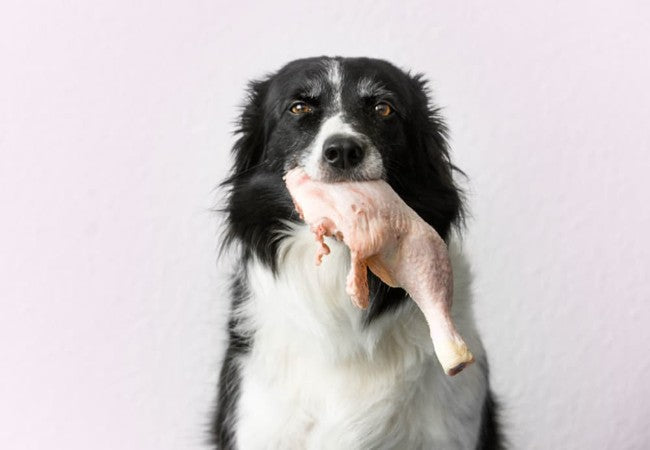Salmonella in Dogs (2025): Vet Guided Prevention, Symptoms & Treatment 🐶🦠

In this article
Salmonella in Dogs (2025): Vet Guided Prevention, Symptoms & Treatment 🐶🦠
By Dr. Duncan Houston BVSc
Salmonella infection—also called salmonellosis—is a bacterial disease that can affect your dog’s digestion and systemic health. While dogs are typically more resistant than humans, puppies, older dogs, or those with weak immune systems may become seriously ill. This guide offers comprehensive veterinary insights: risks, symptoms, diagnosis, treatment, home care, and how to keep your family safe.
1. What Is Salmonellosis? 🤔
Salmonella bacteria infect the GI tract and sometimes spread elsewhere. Although most strains are species-specific, the types found in raw meats are zoonotic—meaning they can affect dogs and people. Even asymptomatic dogs can carry and shed the bacteria in stool or saliva.
2. 🥩 Common Causes & Risk Factors
Salmonella infection arises from:
- Eating raw or undercooked meat or eggs, raw chicken frequently associated
- Contaminated treats like dried pig ears
- Contact with infected feces—outdoor or multi-pet exposure
- Stress or weakened immunity from illness or medications
PetMD strongly advises against raw diets—they’re a leading source of Salmonella and resistant bacteria.
3. Recognizing Symptoms 🩺
When symptoms appear, they often include:
- Sudden, severe watery diarrhea (possibly bloody)
- Vomiting, lethargy, fever, dehydration
- Reduced appetite, weight loss, collapsed appearance
In rare cases, Salmonella spreads to the lungs or reproductive organs, leading to pneumonia or pregnancy loss.
4. Diagnosing Salmonellosis
A vet typically suspects Salmonella when there are GI symptoms and a history of raw/feed exposure. Diagnosis involves:
- Fecal cultures targeting Salmonella
- Bloodwork to check for fever, infection, or dehydration
- Imaging and further tests to rule out other infections (parasites, viruses, obstructions)—Giardia, E. coli, etc.
5. Treatment Protocols
🏥 Supportive Care:
- IV fluids or subcutaneous fluids to restore hydration
- Anti-nausea/anti-diarrheal medications
- Probiotics or fecal transplants to restore gut balance
💊 Antibiotics:
Not always necessary—reserved for at-risk pets (puppies, older, systemic signs). Vets choose based on culture, sometimes starting with broad-spectrum antibiotics pre-results.
6. Recovery Expectations 🛌
Recovery varies:
- Mild cases may resolve in days with home care
- Severe cases may need weeks—supportive care, feeding tubes, and joint antibiotics
Follow-up until symptoms fully subside, and negative cultures are advised.
7. Zoonotic Risks—Human Health Concerns
Even without symptoms, dogs can shed Salmonella in feces or saliva—everyone in the household is at risk. Follow these precautions:
- Wash hands thoroughly after contact, especially after handling raw foods or pet waste
- Sanitize food bowls, surfaces, toys—disinfect with bleach solution
- Use gloves when cleaning contaminated areas
8. Prevention Strategies 🛡️
- Feed commercial cooked diets or treats, not raw or undercooked
- Cook meat and eggs fully—no pink centers
- Regularly clean and disinfect feeding areas and tools
- Dispose of pet feces promptly, avoid cross-contamination
- Check FDA recall alerts for pet food and treats
9. Breed & Lifestyle Considerations
- Puppies, seniors, immunocompromised dogs: Higher risk—monitor for any GI upset from new foods
- Raw diet owners: Extra caution—wash prep surfaces, use separate bowls for cooking
- Multi-pet homes: One infected dog can infect others—quarantine until cleared
10. At-Home Care and Monitoring
- Offer small, bland meals (like boiled chicken & rice)
- Keep fresh water easily accessible to prevent dehydration
- Monitor stool frequency, consistency, appetite, and energy—log changes
- Call your vet immediately for bloody diarrhea, vomiting >24 hrs, fever, weakness
11. Tools & Services You Can Rely On
- Ask A Vet App: get pediatric/live advice as soon as symptoms appear
- Disposable gloves & bleach cleaner: for daily disinfecting routine
12. Recovery, Returning to Normal Diet
Once cleared:
- Reintroduce commercial kibble over 5–7 days, mixing with a bland diet
- Monitor for relapse; keep probiotic support for 10–14 days
- Re-test stool only if symptoms reappear
13. Common Myths Debunked
- Raw is healthier: No, it carries high bacterial risks with no proven advantages over cooked food
- Only symptomatic dogs spread Salmonella: False—asymptomatic dogs still shed bacteria in stool and saliva
14. 🚨 When to Contact the Vet Immediately
- Bloody diarrhea or vomiting for >24 hrs
- Dehydration signs (sunken eyes, dry gums, no urination)
- Fever, weakness, refusal to eat
- Sudden collapse or seizure activity
📌 Final Takeaways
- Salmonella infection is uncommon but potentially serious—especially from raw foods
- Watch for GI symptoms plus fever or lethargy
- Diagnosis via culture; treated with fluids, supportive care; antibiotics when needed
- Zoonotic—wash hands, clean surfaces carefully
- Avoid feeding raw foods; stick to commercial cooked diets






